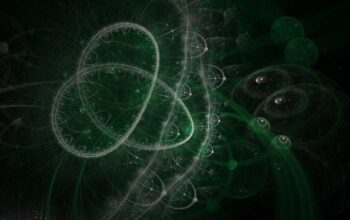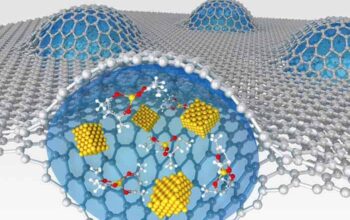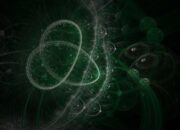Fusion, the process by which atomic nuclei combine to form heavier nuclei, has long been hailed as a transformative avenue for energy production and the synthesis of new materials. Recent advancements in the field suggest a novel approach, dubbed “Fusion Hitch,” which may significantly enhance our capabilities to create heavy elements. This innovative technique addresses perennial challenges associated with generating elements far heavier than iron on the periodic table, hinting at profound implications for both theoretical physics and applied science.
The fascination surrounding the creation of heavy elements primarily emanates from their unique properties and potential applications. Heavier elements, especially those beyond uranium, are not only elusive in nature but are also inherently unstable. They decay rapidly, which poses significant challenges in both observing their characteristics and harnessing their potential uses. The quest for a methodical approach to synthesize these heavy elements has captivated scientists for decades, leading to ongoing debates about the practicalities and theoretical underpinnings of such endeavors.
Historically, heavy element synthesis was largely dependent on nuclear reactions in particle accelerators and nuclear reactors. The traditional fission process, while effective for generating energy, often results in the production of isotopes of lighter elements or contributes to the formation of only moderately heavy elements. The introduction of fusion as a mechanism offers a unique pathway, potentially circumventing some of the limitations inherent in fission-based methods.
What constitutes this Fusion Hitch? It can be understood as an iterative refinement of fusion technology, leveraging advanced plasma confinement methods and novel fuel compositions. By manipulating conditions to enhance reaction probabilities among isotopes of hydrogen, researchers can increase the likelihood of forming heavier nuclei through subsequent fusion events. Specifically, the focus is shifting toward the manipulation of high-energy deuterium-tritium reactions, which promise to yield not just helium but also heavier isotopes when employed in successive fusion sequences.
The cornerstone of this technique lies in optimizing confinement time and temperature. Magnetic confinement fusion (MCF) and inertial confinement fusion (ICF) have emerged as primary contenders in this quest. MCF employs magnetic fields to contain plasma at extremely high temperatures, while ICF compresses fuel pellets with powerful lasers. The Fusion Hitch enhances the potential of these methodologies by introducing layered fuel structures, allowing for a multi-step fusion process that could incrementally build heavier elements from lighter ones.
One of the compelling aspects of this approach is its theoretical underpinning in nucleosynthesis. Stellar nucleosynthesis, the process by which elements are formed within stars through nuclear fusion, serves as a natural inspiration. In stars, extreme temperatures and pressures facilitate reactions that forge elements up to iron via the proton-proton chain or the carbon-nitrogen-oxygen cycle. Beyond iron, heavier elements are typically synthesized in supernovae or during neutron star mergers through rapid neutron capture processes. The Fusion Hitch strives to simulate these astrophysical processes in controlled laboratory settings, creating a synthetic environment conducive to the formation of heavy elements.
This synthetic ability has wide-ranging implications. For instance, heavy elements such as gold, platinum, and other rarer materials have significant applicative properties in electronics, materials science, and medicine. Moreover, the possibility of synthesizing superheavy elements, which are theorized to exist under specific conditions, opens avenues for discovering new phenomena in physics. These elements, such as those at the end of the periodic table, may exhibit exotic properties not seen in lighter counterparts and could contribute to advancements in quantum computing and nanotechnology.
Technologically, the implications extend to energy. The efficient generation of heavy elements could potentially enhance the capabilities of nuclear fuels or lead to novel isotopes with desirable decay properties for medical applications in radiotherapy. This intersection of fusion research and practical applications further underscores the significance of the Fusion Hitch as a pivotal innovation.
However, challenges remain formidable. The synthesis of heavy elements, particularly those far beyond uranium, necessitates sustained multistep fusion processes, which have yet to achieve groundbreaking success. Maintaining the requisite conditions for fusion over those extended timescales and harnessing the resultant energy efficiently poses significant engineering challenges. Furthermore, regulatory and safety considerations surrounding experimental nuclear reactions must be meticulously addressed to ensure public safety and environmental protection.
In conclusion, the exploration of the Fusion Hitch represents a concerted step forward in the scientific endeavor to unlock the mysteries of the atomic nucleus and the creation of heavy elements. It encapsulates the intersection of fundamental physics and practical applications, reflecting a profound curiosity about the building blocks of matter. As research continues into optimizing fusion processes and understanding the underlying nuclear mechanics, the promise of synthesizing heavy elements may transition from theoretical exploration to tangible reality—transforming our understanding of chemistry, physics, and the universe itself.








